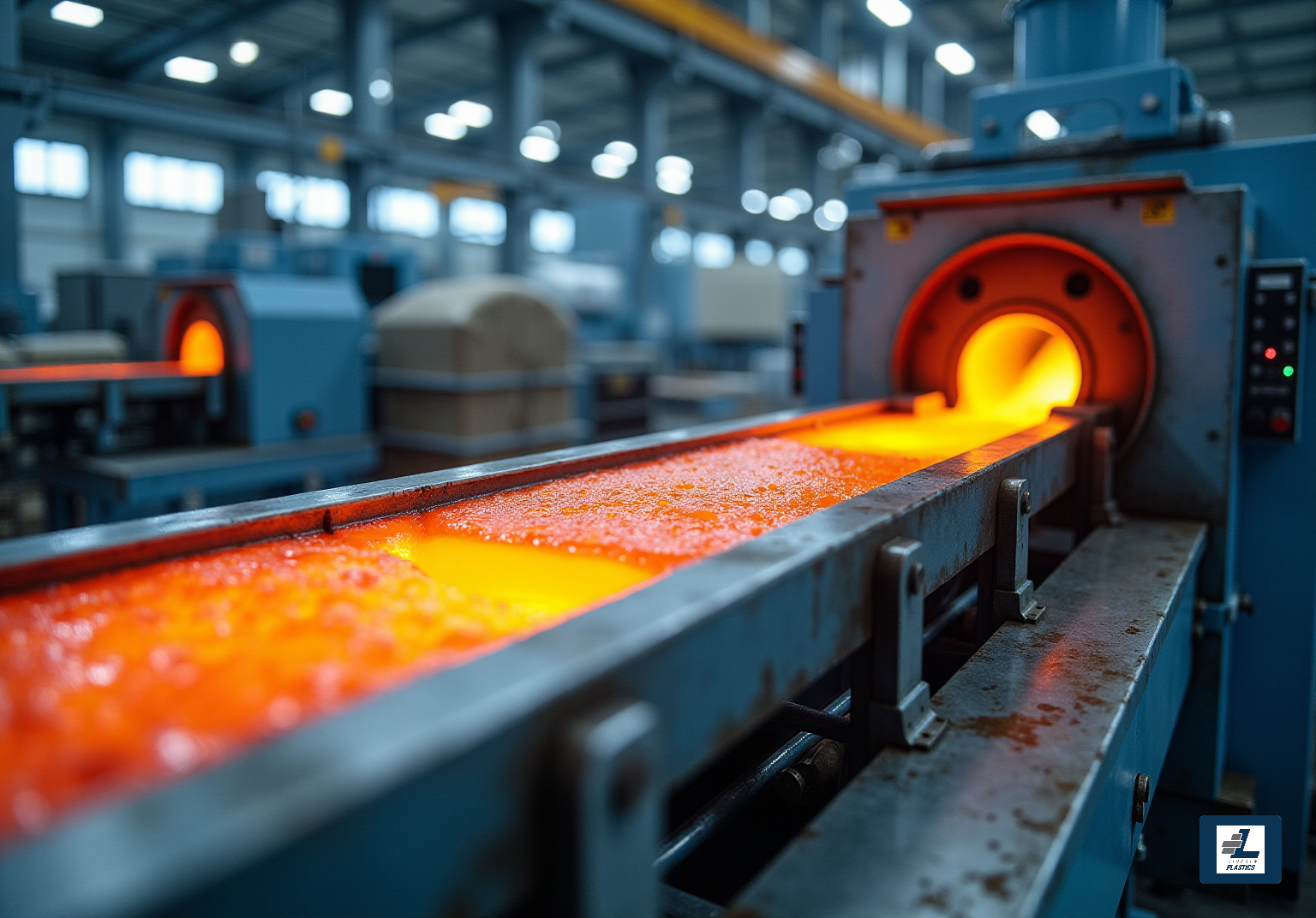
Best Practices for the Extrusion of Polymers in Manufacturing
Overview
When it comes to the extrusion of polymers in manufacturing, there are some best practices that can really make a difference. First off, selecting the right materials is key. You also want to enhance your processing parameters and keep your equipment in tip-top shape. Why? Because these steps help ensure high-quality output and operational efficiency.
Now, you might be wondering how this all ties together. Well, by understanding and implementing these practices, manufacturers can tackle common challenges like material variability and equipment limitations. This not only leads to improved product quality but also helps in meeting industry standards. So, let’s dive in and explore how you can make these practices work for you!
Introduction
Polymer extrusion is really at the heart of modern manufacturing, turning raw materials into essential products that shape our industries. When manufacturers use the right techniques and practices, they can boost production efficiency and improve product quality, which is key for staying competitive in the market.
But let’s be real—navigating the complexities of polymer extrusion can be tricky and might throw some hurdles in the way of success. So, what are some best practices manufacturers can adopt to tackle these challenges and ensure their extrusion processes perform at their best?
Understand Polymer Extrusion Processes
The process of polymer shaping, known as the extrusion of polymers, is crucial in manufacturing as it involves melting plastic and pushing it through a die to create continuous forms. Understanding the different types of is key to boosting production efficiency and product quality. Lincoln Plastics has been a leader in custom shaping solutions since 1948, specializing in both flexible profiles and rigid plastic production. They ensure high-quality products tailored to client specifications.
Now, let’s talk about the two primary methods:
- Single-Screw Extrusion: This method is the most common. It uses a single screw to move the polymer through a heated barrel. It’s particularly suited for producing simple shapes like pipes and sheets. Many manufacturers prefer it for its ease of operation and lower initial costs. In fact, about 60% of manufacturers opt for single-screw processing because of its straightforward design and maintenance. It’s widely used in food packaging and pipe production, making it a reliable choice.
- Twin-Screw Processing: On the flip side, twin-screw processing uses two intermeshing screws, which allows for better mixing and compounding of materials. This method shines when it comes to producing complex profiles and is often used in industries that need high precision, like automotive and medical. Twin-screw extruders are favored for their versatility, allowing for the processing of composite and recycled materials. This is increasingly important in today’s sustainability-focused market, especially when creating items with multiple compositions.
Industry leaders emphasize the importance of choosing the right shaping technique based on production needs. For example, while single-screw extruders work well for simpler applications, the extrusion of polymers using twin-screw extruders is essential for more intricate designs that require precise control over material composition. Current trends show a growing investment in twin-screw technology, with companies recognizing its advantages in handling complex materials and improving product standards. As industry specialists point out, "Twin screw processing employs two screws for improved mixing and management of intricate materials," highlighting its vital role in modern manufacturing.
Lincoln Plastics' commitment to quality and customization means clients receive tailored solutions that fit their specific needs. Case studies show how effective twin-screw extrusion of polymers can be for producing advanced profiles. For instance, producers using twin-screw systems have reported enhanced capabilities in developing items with diverse structural traits, which are crucial for meeting the evolving market demands. The case study on 'Extruder Efficiency in Recycling Plastics' reveals how twin-screw extruders improve the quality of recycled plastic items compared to single-screw extruders. By understanding these processes, producers can make informed choices that lead to better operational efficiency and superior product performance. Plus, with the increasing focus on sustainability and strict environmental regulations, choosing the right processing method is more important than ever.
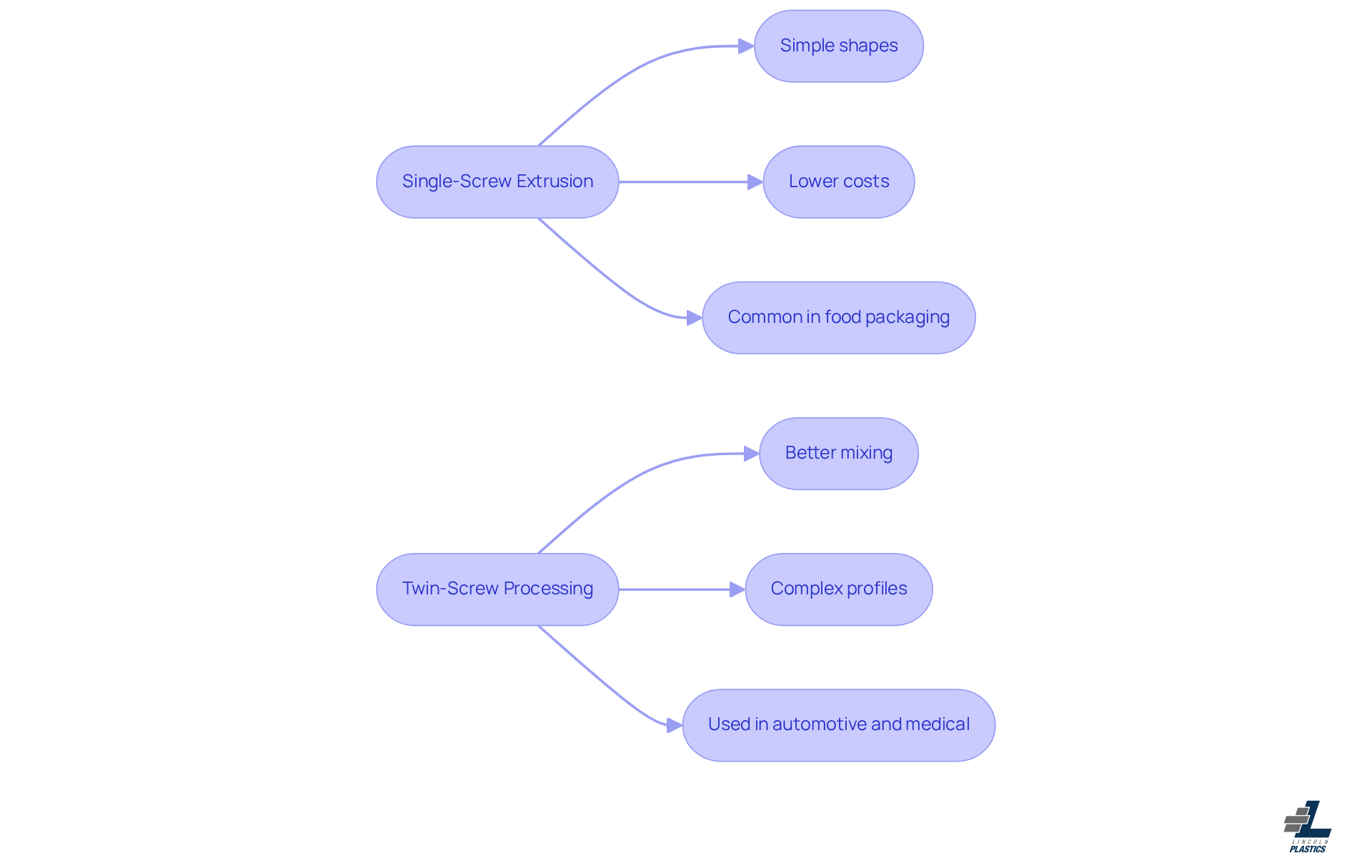
Implement Best Practices for Quality and Efficiency
To achieve optimal quality and efficiency in polymer extrusion, manufacturers should consider a few best practices that can really make a difference:
- Material Selection: Choosing the right polymer is super important. Think about what you need for your specific application—like , flexibility, and strength. The right material not only boosts performance but also impacts energy use during shaping. At Lincoln Plastics, we work closely with OEMs to ensure the materials meet all standards, including specific assessments for 'fit and function' and using various check gauges to confirm an appropriate end-use fit.
- Process Enhancement: Keeping an eye on and tweaking parameters—like temperature, pressure, and screw speed—is key to ensuring consistent product quality. Research shows that just cranking up the screw speed doesn’t always mean lower energy consumption, which is why careful calibration is essential for maximizing efficiency. For example, while absorbed current and power factor go up with screw speed, you might not hit peak energy efficiency at the highest speeds.
- Preventive Maintenance: Setting up a regular maintenance schedule for your extrusion equipment can really cut down on downtime and avoid those costly repairs. Regular checks can extend your machinery's life and keep performance top-notch. A common pitfall? Ignoring scheduled maintenance can lead to unexpected breakdowns and higher costs.
- Training and Development: Don’t underestimate the power of investing in operator training. When your staff knows their stuff, they can manage equipment and processes more effectively, leading to better efficiency and fewer errors. It’s an investment that pays off with improved outputs and smoother operations.
- Utilize Technology: Embracing advanced technologies—like real-time monitoring systems—can help manufacturers track production metrics like a pro. This data-driven approach is great for spotting improvement areas and boosting overall operational efficiency. At Lincoln Plastics, we make sure our rigid profiles meet all specified critical dimensions with a solid quality system that includes detailed quality documentation and in-process checks.
- Common Pitfalls: Be aware of some common pitfalls when putting these best practices into action. For instance, overlooking the importance of material properties or failing to calibrate equipment properly can lead to subpar performance. Addressing these issues early on can save you from costly mistakes.
By following these best practices, manufacturers can significantly boost their operational efficiency, cut down on waste, and enhance the extrusion of polymers to produce high-quality goods that meet strict customer specifications. As Enrico Bovo pointed out, understanding the relationship between process settings and energy use is crucial for improving molding processes.
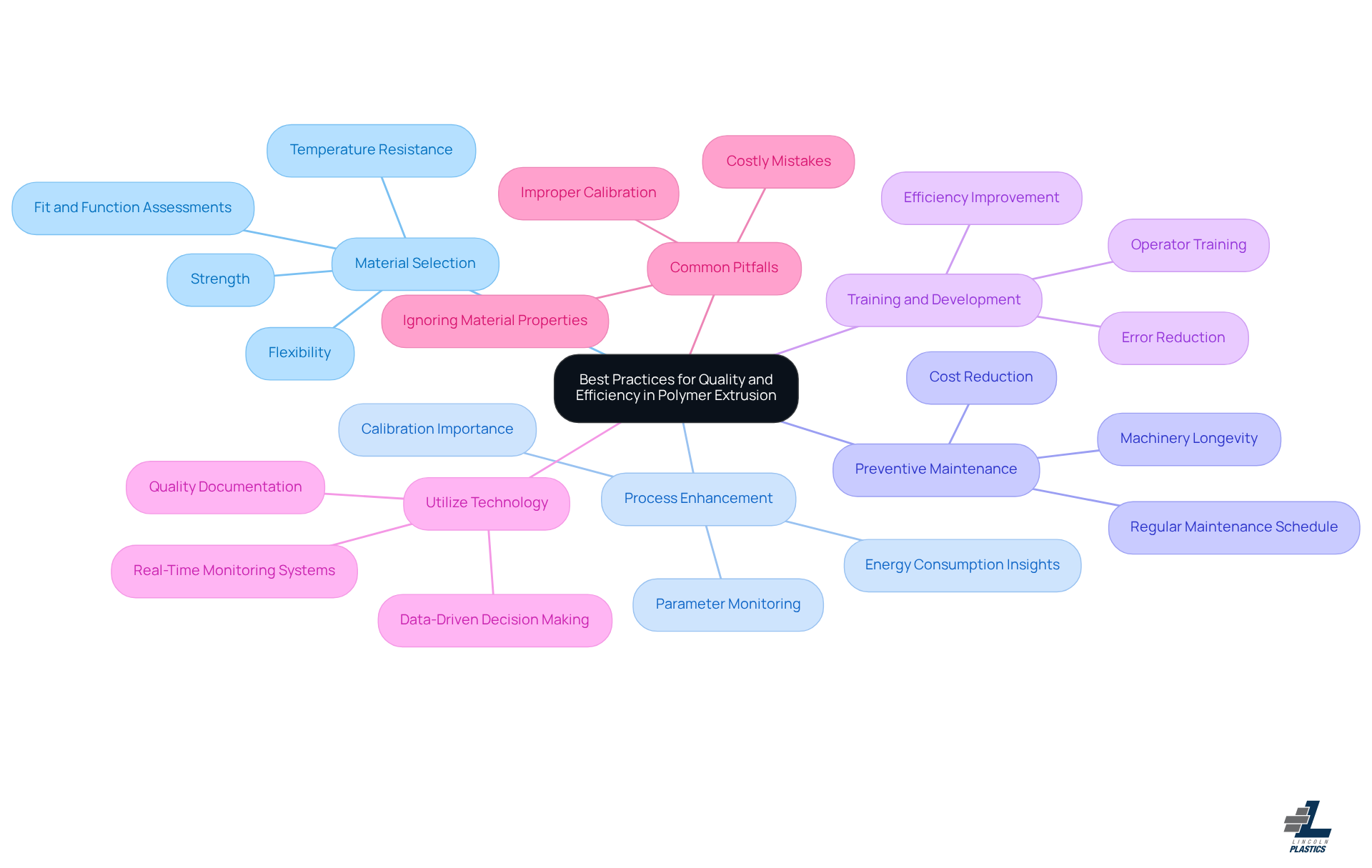
Address Challenges in Polymer Extrusion
Manufacturers in the extrusion of polymers often encounter several challenges that can significantly affect product quality and production efficiency. Let’s break it down.
First up is Material Variability. When raw materials don’t meet consistent standards, defects in the final product can pop up. To tackle this, it’s super important to build solid relationships with suppliers and carry out regular inspections on incoming materials. By putting strong quality control measures in place throughout the supply chain, you can dodge contamination and degradation, leading to better consistency in your products.
Now, let’s talk about Process Variability. Variations in shaping parameters—like temperature and pressure—can seriously affect the consistency of your output. So, how can you keep things stable? Utilizing is a great way to maintain steady processing conditions. For instance, making careful adjustments to heating and cooling systems is key to boosting the standard and consistency of your products.
Next, we have Equipment Limitations. If your equipment is aging or not quite up to par, it can slow down production efficiency and affect product quality. Regular evaluations of equipment efficiency are a must. Consider enhancements or replacements to ensure everything is running smoothly.
And let’s not forget about Environmental Factors. External conditions like temperature and humidity can throw a wrench in your shaping processes. Keeping a controlled production environment is crucial to minimize these impacts and ensure you’re getting consistent output.
By addressing these challenges head-on, you can optimize your production processes and uphold high-quality standards in the extrusion of polymers operations. This proactive approach not only boosts operational efficiency but also builds long-term relationships based on trust and reliability with your clients. So, why not start tackling these challenges today?
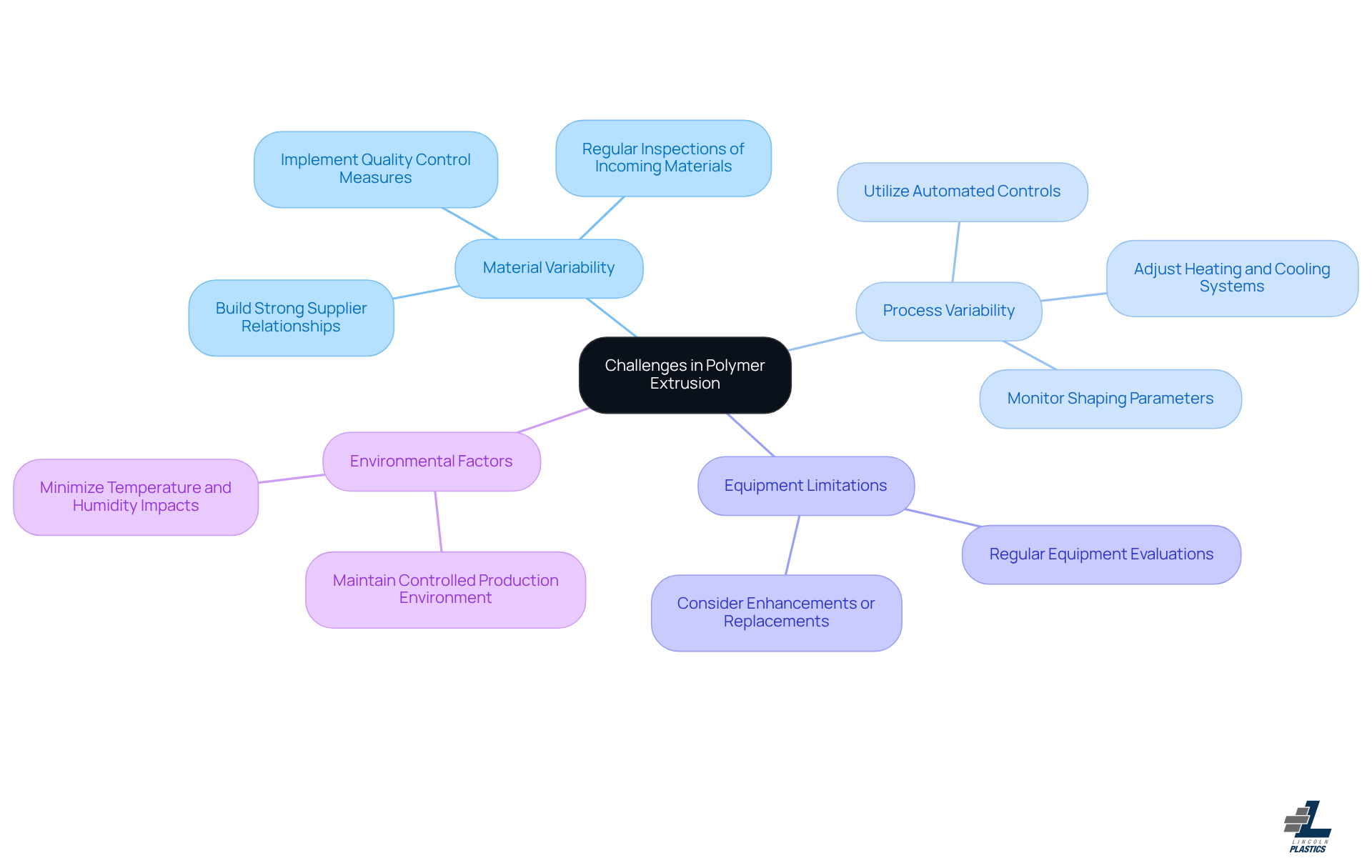
Ensure Quality Control and Compliance
To ensure quality control and compliance in polymer extrusion, manufacturers can follow a few straightforward steps:
- Set Clear Standards: It’s important to define what excellence looks like for your products. This means aligning with industry regulations and meeting customer expectations in the context of the extrusion of polymers. Think about precise specifications for dimensions, tolerances, and material properties—they’re crucial for keeping your items intact. For instance, Lincoln Plastics works closely with OEMs to make sure their products meet all standards, including specific tests for 'fit and function'. Plus, the FDA requires manufacturers to get clearance before marketing plastic materials that touch food, highlighting the need to stick to those regulations.
- Use Inspection Protocols: Regular inspections during production stages are key for catching defects early. You can use methods like visual checks, dimensional measurements, and material testing to ensure products meet performance standards. Lincoln Plastics, for example, employs various check gauges to ensure a proper fit for end use, which boosts measurement accuracy and speeds up inspections.
- Document Everything: Keeping thorough records of production processes, standards assessments, and compliance measures is essential. This not only improves traceability but also supports ongoing improvements, helping manufacturers adapt to changing standards. Lincoln Plastics maintains a robust assurance system that includes a dedicated manual for each plastic profile, complete with drawings and in-process checks. The OECD’s new chemical data sharing guide promotes fair access and regulatory alignment, aiding compliance.
- Train Your Team: Educating employees about relevant regulations and standards fosters a culture of adherence and excellence. When your staff is well-informed, they’re better equipped to uphold these standards throughout production. Experts like Dr. Steven Brennan stress the importance of preparing for lifecycle accountability and operational changes, particularly with the extrusion of polymers like PFAS under increased scrutiny.
- Conduct Regular Audits: It’s wise to carry out internal audits routinely to check compliance with standards and spot improvement opportunities. This proactive approach helps maintain and ensures adherence to regulatory requirements. For example, recent regulatory changes regarding PFAS polymers in Europe highlight the need for producers to adjust their compliance frameworks accordingly.
By prioritizing these quality control and compliance measures—like sourcing colors that meet Pantone specifications and recognizing specific applications like conduit manufacturing—manufacturers can enhance their reputation and build long-term relationships with clients. Ultimately, this leads to sustained business success.
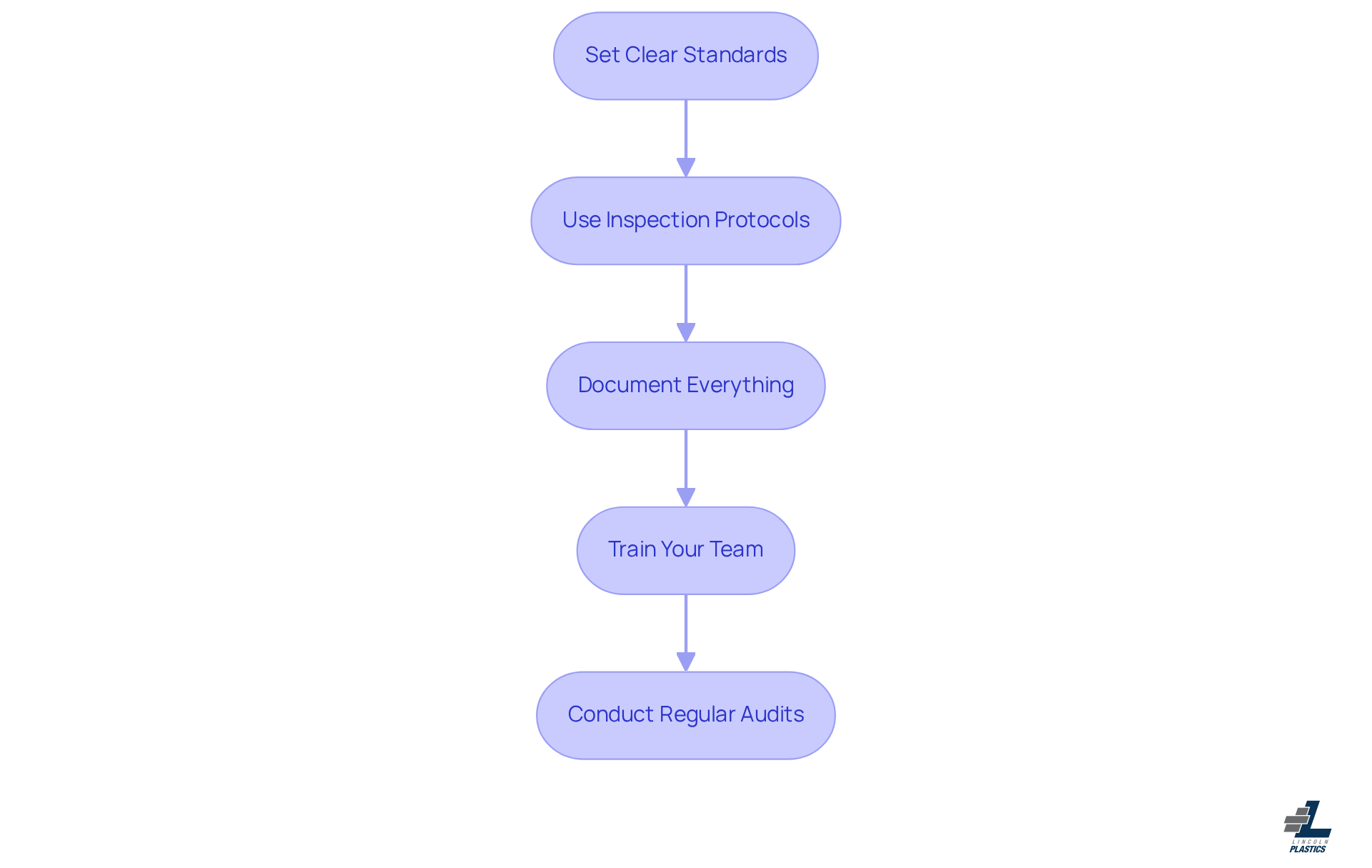
Conclusion
Understanding the ins and outs of polymer extrusion is super important for manufacturers looking to boost product quality and operational efficiency. In this article, we’ve explored different extrusion methods, focusing on the perks of single-screw and twin-screw processes. Each technique brings its own unique benefits tailored to various production needs, showing just how crucial it is to choose the right method based on what you’re specifically aiming to achieve.
We’ve touched on some key points, like best practices for picking materials, enhancing processes, keeping up with preventive maintenance, and the need for solid operator training. Tackling challenges such as material variability, process stability, and environmental factors is essential for maintaining high production standards. Plus, putting quality control measures and compliance protocols in place helps manufacturers consistently meet industry regulations and customer expectations.
So, what’s the takeaway? Embracing these best practices not only boosts efficiency and product quality but also prepares manufacturers to adapt to the ever-changing world of polymer extrusion. By focusing on innovation and sustainability, industry leaders can sharpen their competitive edge and build lasting relationships with clients. Taking proactive steps today can really set the stage for a more efficient and compliant future in polymer manufacturing.
Frequently Asked Questions
What is polymer extrusion?
Polymer extrusion is the process of shaping polymers by melting plastic and pushing it through a die to create continuous forms. It is crucial in manufacturing for boosting production efficiency and product quality.
What are the two primary methods of polymer extrusion?
The two primary methods are single-screw extrusion and twin-screw processing. Single-screw extrusion uses a single screw to move the polymer through a heated barrel, while twin-screw processing uses two intermeshing screws for better mixing and compounding of materials.
What are the advantages of single-screw extrusion?
Single-screw extrusion is the most common method, favored for its ease of operation, lower initial costs, and suitability for producing simple shapes like pipes and sheets. Approximately 60% of manufacturers prefer this method for these reasons.
In what applications is single-screw extrusion commonly used?
It is widely used in food packaging and pipe production due to its reliability and straightforward design.
What are the benefits of twin-screw processing?
Twin-screw processing allows for better mixing and compounding of materials, making it ideal for producing complex profiles. It is often used in industries requiring high precision, such as automotive and medical sectors.
Why is twin-screw extrusion important in today's market?
Twin-screw extrusion is increasingly important due to its versatility in processing composite and recycled materials, aligning with sustainability trends and the need for high-quality products with diverse structural traits.
How does twin-screw extrusion compare to single-screw extrusion in recycling plastics?
Twin-screw extruders have been shown to improve the quality of recycled plastic items compared to single-screw extruders, enhancing operational efficiency and product performance.
What should manufacturers consider when choosing a shaping technique?
Manufacturers should consider their production needs, as single-screw extruders are suitable for simpler applications, while twin-screw extruders are essential for intricate designs that require precise control over material composition.
List of Sources
- Understand Polymer Extrusion Processes
- News - Single Screw Extrusion vs Twin Screw Extrusion What Sets Them Apart (https://zsjtjx.com/news/single-screw-extrusion-vs-twin-screw-extrusion-what-sets-them-apart)
- The difference between single screw and twin screw extruders | Bausano (https://bausano.com/en/press-and-news/the-difference-between-single-screw-and-twin-screw-extruders)
- The Extrusion Industry in 2025: Innovations, Trends, and Opportunities (https://plextrusions.com/extrusion-blog/the-extrusion-industry-in-2025-innovations-trends-and-opportunities)
- Implement Best Practices for Quality and Efficiency
- Driving Growth and Efficiency: How Bolsas de los Altos Leveraged TSM Technology – TSM Controls Systems (https://tsm-controls.com/blog/case_studies/driving-growth-and-efficiency-how-bolsas-de-los-altos-leveraged-tsm-technology)
- The influence of material properties and process parameters on energy consumption during extrusion of flexible PVC (https://sciencedirect.com/science/article/pii/S2214993723002178)
- Address Challenges in Polymer Extrusion
- Overcoming Challenges and Misconceptions of Extrusion - Alexandria Industries (https://alexandriaindustries.com/industry-news/overcoming-challenges-misconceptions-extrusion)
- Common Challenges in Plastic Pipe Extrusion Lines and How to Address Them - CGFE (https://jydjx.com/common-challenges-in-plastic-pipe-extrusion-lines-and-how-to-address-them)
- Custom Plastic Extrusion: Basics, Benefits, and Future Explained (https://pexco.com/custom-plastic-extrusion-basics-benefits-and-future-explained)
- Ensure Quality Control and Compliance
- Polyethylene Quality Control Order Amendment 2025 (https://indianchemicalregulation.com/polyethylene-quality-control-order-amendment-2025)
- India Further Delays BIS QCOs on PVC, PP to December 2025 Amid Regulatory Revisions - REACH24H (https://en.reach24h.com/news/industry-news/chemical/india-delays-bis-qco-on-pvc-pp)
- Quality Assurance for the Best Plastic Extrusion Products (https://inplexllc.com/blog/quality-assurance-for-extrusion-products)
- EU Briefing Signals Regulatory Shift on PFAS Polymers Across Manufacturing Sectors - Foresight (https://useforesight.io/news/eu-briefing-signals-regulatory-shift-on-pfas-polymers-across-manufacturing-sectors)
- Quality Control in Plastic Manufacturing: What You Need to Know (https://deskera.com/blog/quality-control-in-plastic-manufacturing)


